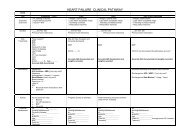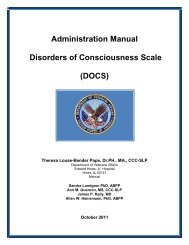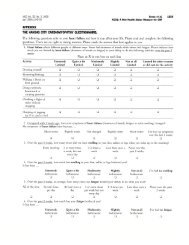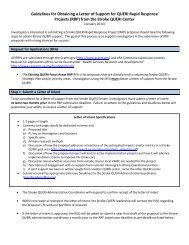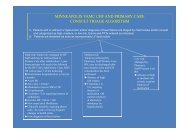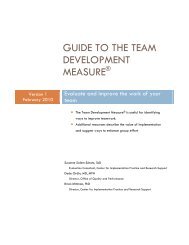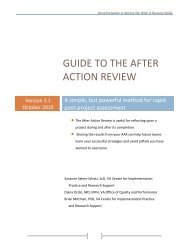The Veteran Supported Education Service Treatment Manual: VetSEd
The Veteran Supported Education Service Treatment Manual: VetSEd
The Veteran Supported Education Service Treatment Manual: VetSEd
You also want an ePaper? Increase the reach of your titles
YUMPU automatically turns print PDFs into web optimized ePapers that Google loves.
PART THREE: IMPLEMENTATION TOOLKIT FOR VETSED<br />
I. INTRODUCTION TO PART THREE<br />
<strong>The</strong> following section describes practices for implementing this <strong>VetSEd</strong> program<br />
including the organizational home in the VHA, the target population, the referral pool,<br />
staffing considerations, and supervision and fidelity processes. We begin with providing<br />
the background to both the service of supported education and the urgent need for<br />
recently returning <strong>Veteran</strong>s for this service.<br />
II.<br />
BACKGROUND<br />
A. <strong>The</strong> Need for <strong>Education</strong> <strong>Service</strong>s for Post 9/11 <strong>Veteran</strong>s<br />
<strong>The</strong> recent wars in Iraq and Afghanistan have resulted in an influx of <strong>Veteran</strong>s with<br />
mental health conditions who aspire to use the GI Bill to advance their education.<br />
<strong>Education</strong> has long been the avenue to improved employment opportunities and stable<br />
community residence for civilians. A majority of <strong>Veteran</strong>s have limited college<br />
experience or post-secondary degrees (Holder, 2010) and many see military service as a<br />
way to attain higher education (Wilson et al., 2000). Despite the promise afforded by the<br />
Post 9/11 GI Bill, many <strong>Veteran</strong>s especially those with mental health conditions and comorbidities<br />
such as substance abuse, depression, or traumatic brain injury are challenged<br />
to succeed in their educational goals. As many as 60% of new student <strong>Veteran</strong>s are<br />
returning from duty with significant Posttraumatic Stress Disorders and/or related<br />
psychiatric disabilities. <strong>The</strong>se disabling conditions can challenge <strong>Veteran</strong>s in successfully<br />
using the GI Bill and completing post-secondary education or training (California<br />
Traumatic Brain Injury Board Final Report; Radford, 2011; Taber & Hurley, 2007;<br />
Tanielian, 2008; Taylor, 2011; U.S. Department of <strong>Veteran</strong>s Affairs, 2011).<br />
Consequently, while many <strong>Veteran</strong>s with PTSD are pursuing their education dreams,<br />
many also are dropping out with some schools reporting <strong>Veteran</strong> student graduation rates<br />
as low as 3% (Alabama <strong>Veteran</strong>s Initiative, 2010). <strong>Veteran</strong>s with disabilities are growing<br />
in number on college campuses (Vance & Miller, 2009). However, the American Council<br />
of <strong>Education</strong> (2009) reported that no campuses were planning to expand services for<br />
students with disabilities, which includes student <strong>Veteran</strong>s with disabilities (Miller,<br />
2011).<br />
147 | P a g e



